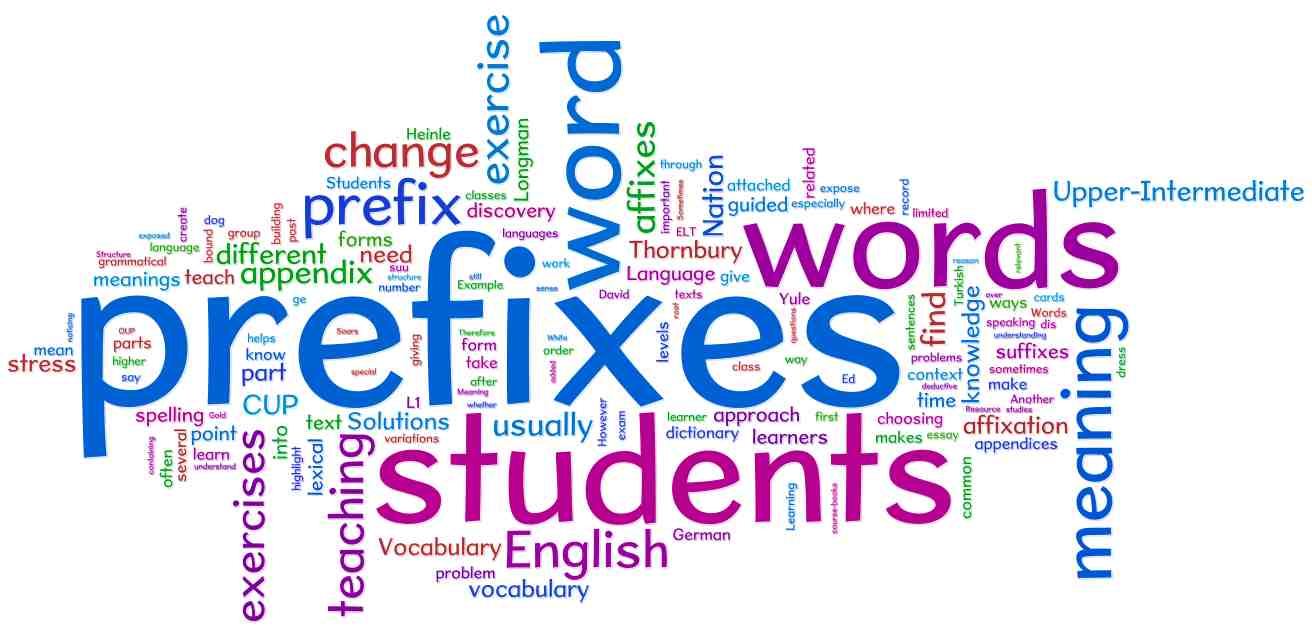
by Donna | Aug 24, 2013
 |
| Eng111cafe clip art |
A is for APPOSITIVE!
We teach the appositive extensively in our writing and language arts books because it is an amazing conciseness technique–and it shows a student’s skill in handling difficult grammar concepts and punctuation challenges. Plus, it truly does help a student write more concisely!
Here is the basic of this grammar item:
1. Is a phrase that restates something else.
2. Is usually used to restate (or elaborate on) the subject (though it can be used to restate anything really.
3. Is set off with commas if it falls in the middle of the sentence. (Remember: Anything that is set off with commas should be “removable” and a complete sentence remains without it!)
4. Can be used to combine two sentences into one in short, choppy sentences.
Example:
Donna writes language arts and composition books every day.
Donna has written over fifty curriculum texts.
Donna, WHO HAS WRITTEN OVER FIFTY CURRICULUM TEXTS, writes language arts and composition books every day.
Cool, huh?
A is for APPOSITIVE
Did you know that last week’s PUNCTUATION PUZZLE had an appositive in it?
I had barely noticed her mood, HER TEMPERAMENT, when she suddenly blew up, and she began shouting and throwing things at me, which was something I was not accustomed to seeing.
Notice the following:
1. Her temperament renames the noun mood.
2. It is set off with commas surrounding it (her temperament).
3. It (along with the commas) can be removed from the sentence, and a complete sentence remains.

by Donna | Aug 24, 2013
 |
| Edudemic (clip art) |
B is for BACK-TO-SCHOOL!
Do you start back on the traditional school schedule? Or do you school in the summer to get some days in? Or do you school year round and take breaks throughout the year?
Homeschooling provides flexibility in all areas (not just starting school but literally EVERYTHING) that we don’t even begin to appreciate fully. (I didn’t until my kids started taking college classes, and they were so locked in to schedules and no time off!!!!)
B is for BACK-TO-SCHOOL!
Do you have a command center? Regardless of whether you use charts, sticker posters, wipe and write, or clip boards for your schedule/chores/organizational systems, I recommend you follow this one tip first:
Get the first hour of the day down pat before you try to “perfect” everything else.
When the first hour of your day is good, the whole day can be good!
https://www.remodelaholic.com/2013/07/family-command-centers
B is for BACK-TO-SCHOOL!
While we are blessed not to have to buy, buy, buy…clothes, supplies, etc., every August just because everybody else is (sometimes I do think it would be fun to go “back to school” clothes shopping with the kids though!), do pay attention to the sales during this time.
For example, we use a lot of three-pronged, two-pocket folders for each monthly unit of work (for storage when the month is done), and those are available now for fifteen cents each vs. up to sixty cents each during the “off season.”
Plus, I just have to get some scented markers, cool sticky notes, or other fun thing for the teacher!

by Donna | Aug 24, 2013
 |
| CLK Clipart |
A is for ATTENDANCE!
What does attendance mean in your state?
In our nearly thirty years of homeschooling in Indiana, we have had laws that have read something like this: “A student between the ages of seven and sixteen (not sure what age this is now) must attend public school or have equivalent instruction” and equivalent instruction has usually meant 180 days of “instruction.”
More on this later–such as attendance keeping AND what constitutes a day of school–if our child is home, isn’t he “in school”?
A is for ATTENDANCE!
If you live in a state where you are mandated to keep track of your days (your kids’ “attendance”), I recommend keeping it simple!
Even if you use an elaborate lesson plan or other tracking system, I would still get a dollar pocket calendar and write the days on it. It can be as simple as putting in the corner of each school day 4/180 (day four of attendance out of 180 total).
The reason for this is that if all you really HAVE to have is 180 days recorded somewhere, then do that in a simple, non -fussy way so that you can be sure that it gets done. Then if you want to record it i your lesson plan, tracker, etc., as well, that is fine.
However, even if your more elaborate system breaks down somewhere mid-year (or your computer loses it!), you will still have your pocket calendar with the minimum that you are required taken care of.
More on WHAT to count as a homeschool day later!
A is for ATTENDANCE!
How do you know when something should be counted as a full day or half day or no day?
There are plenty of ways to look at this: (1) must complete all regular daily work to be a day; (2) schools take half days all the time for movies, inservice, etc., so it won’t make that much difference; (3) a certain number of hours equals a full day; (4) field trips count/field trips don’t count; (5) other!
The point of this isn’t to solve your “what do I count” dilemma but rather to make us all aware of the need to give our children the best we can and the need to be above reproach at all times.
We personally have decided what to “count” as a day in different ways during different seasons: (1) as long as language arts and math were done, we would count a half day of art and gym or library and cooking along with that for a day; (2) a certain amount of time. We used an hour counting approach (hours worked on academics or training-only non academics (PE, art, home ec, etc.–not daily/routine activities) that went something like this:
a. 2 hours for K-2nd grade
b. 3 hours for 3rd-5th
c. 3.5 hours for 6th-8th
d. 4 to 5 hours for high school
Regardless of how you count your days of ATTENDANCE, please consider the following:
1. Always be above reproach
2. Always do more, not less–and teach your children to go the extra mile while doing this
3. Consider the non-book learning as long as it is true training including audio, video, hands on, etc. (again, not routine, like regular daily chores or skills that are already full developed like making breakfast, etc.)
4. Be consistent. Either count time or count books or count classes, etc. Or count field trips all the time or do not count field trips
5. Keep your system simple–just a simple calendar marking system or tick mark/running day total in your daytimer, etc.
6. Be excited for each day that you complete!
by Donna | Aug 5, 2013
It has been important to us in our child training that we understand (or at least try to understand!) the difference between foolishness (willfulness) and childishness (underdeveloped character). The differences between these two types of behaviors in children are crucial in disciplining properly. This is truly one of the biggest mistakes that we see parents make. For example:
(1) A child who spilled his milk at the table is disciplined in the same manner as he was earlier in the day when he struck his brother
(2) A child who forgot to shut the door and the dog got in the house is disciplined in the same manner as he was when he talked back to his mother
(3) A child who didn’t thoroughly clean his room is disciplined in the same manner as he was earlier when he lied to his dad about using one of this tools
In our child training, Ray and I have tried to determine whether a behavior was rebellion against us (as in outright disobedience or disrespect) or childishness (as in forgetfulness, procrastination, sloppiness, etc.):
1. Foolishness
a. Rebellion
b. Disobedience
c. Disrespect
d. Lying
2. Childishness
a. Undeveloped or underdeveloped character
b. Forgetfulness, procrastination, irresponsibility, etc.
c. May turn into “foolishness” if left unattended
We do this because disobedience requires biblical discipline whereas childishness requires the second aspect of child training we have used: reality discipline (or consequences).
I like what an attendee at a recent seminar told us that she heard about this topic: Punishment is only for the Four D’s:
1. Disobedience (i.e. not forgetfulness or overlooking routine at first)
2. Disrespect (i.e. direct disrespect to parents or those in authority–not disagreeing with you respectfully or having their own thoughts!)
3. Deceit (lying, stealing, telling half truths, etc.)
4. Destruction (purposely hurting things or people)
Which Behavior Is This?
Discerning between disobedience and childishness can be so difficult! Even after nearly thirty-one years of parenting, Ray and I still continuously ask each other which behavior a child is displaying.
Difficult or not, we must do it. The Bible says that we are not to exasperate our children. Two sure ways to exasperate them are to punish incorrectly, as in anger, etc., and to punish something as disobedience, when we should be training through consequences.
All parents are faced with this. A child dawdles when we call him to come get ready for bed, and we wonder whether this is just childishness or if it is real disobedience. When our son leaves the dog out of the kennel for the third night in a row, and the pooch potties on the new carpet, we ask ourselves if our little guy is disobeying or forgetting.
In a nutshell , if a child is disobedient, disrespectful, or rebellious, we have a heart issue—and a serious discipline problem that needs handled in a serious manner—and quickly. That is, the Four D’s need punishment/chastisement, not consequences or reality discipline.
If a child is forgetful, slow, unreliable, etc. (especially a younger child), it is usually childishness—and we can “train” that undeveloped or underdeveloped childishness out of a child through consequences and reality discipline.
Besides disciplining these two types of behaviors correctly, we also need to watch our response to these behaviors. Simply put, not putting the hose back in the garage after the child watered the garden should not be met with the same response by the parent as lying about putting the hose back in the garage!
It is like responding to a child’s red streak in her hair in the same way as we do if that child uses God’s name in vain. There is simply no comparison. And the same should be true in our response to childishness vs one of the Four D’s.
For more information on this, please check out Discipline at our blog–or host a Raising Kids With Character seminar in your church or parenting group or homeschooling group. (Our RKWC seminar is a Christian parenting seminar for all Christian parents as opposed to our homeschooling workshops that we do for homeschool groups. All parents, homeschooling or not, can benefit from Raising Kids With Character!)

by Donna | Jul 31, 2013
The prefix ir is an interesting prefix for a number of reasons:
1. It means not. There are many prefixes that can mean not, such as de, a, un, non; however, ir also means not, which is interesting to me because I don’t think it sounds like it should mean not! To me, it sounds like it should mean again or repeating or something besides not!
2. It only comes before base words that begin with R. In other words, you do not put ir in front of most any word to mean not, like you often do with un or non.
3. This isn’t really interesting–but I like to say it whenever I teach about prefixes. A prefix is a letter or group of letters that you “affix” (which is why it and suffixes are called affixes) to the beginning of a word. It is important to remember that a prefix does not change the spelling of the base word. That is especially crucial in spelling ir words because the ir precedes an R already–and you must keep the base word’s spelling, so when you add this prefix to a word, you will ALWAYS have two R’s in a row: irregular, irresponsible, etc.
4. It is most often put before a word that is should never come before: regardless. We hear people constantly say irregardless, which is, of course, an oxymoronic word because less means without (or not) and ir means not. I guess that makes it sort of like using a double negative! You do not put ir before regardless because regardless already means without regard. With ir in front of it, you are saying not without regard, I guess…. Anyway, irregardless is not a word. So don’t use it. Okay? 🙂
Note: It is correct, however, to use irrespective, which is a substitute (some of the time) for when you are tempted to say irregardless.
However, there are many base words that begin with R that can have ir put before them to mean NOT or the opposite of what the base word means before ir is added to it.
Here is a list to get you started. Notice how if you take the ir off, you have a positive base word (or one that means yes–yes regular, yes responsible, yes revocable, etc.) However, with the ir, the word means not—not regular, not responsible, not revocable, etc.
Remember: You know more than you think you know!
And remember: Use what you already know to learn even more!
irregular
irresponsible
irrevocable
irrefutable
irradiate
irreconcilable
irredeemable
irreducible
irrefutable
irregularity
irrelevant
irreverence
irreligious
irreparable
irreplaceable
irreversible
irresolute
irretrievable
irresistible
Irrelevant
by Donna | Jul 17, 2013
We are having a heat wave here in Indiana. We have had temperatures above ninety degrees this week. Today it was 92 degrees–a perfect day to go swimming and a perfect day to get a sunburn!
For today’s WORDY WEDNESDAY, I thought we would look at two prefixes that have to do with July in Indiana–SOL and THERM.
If you have been reading Language Lady very long, you know my two rules of thumb for learning:
1. You know more than you think you know.
2. Use what you already know to learn even more!
Those two rules of thumb definitely apply to today’s prefixes.+
We encourage our students to take a key word–any word that you already know–that has to do what you are trying to learn.
In the case of sol and therm, you can take two words you already know as your “key words” to help you remember these two prefixes:
SOL–solar….you know that solar means sun if you have ever talked about a solar blanket for your pool, solar power (generating power through the sun), or solar eclipse
THERM–thermos or thermal…you know that THERM means heat if you have ever carried your soup or coffee in a thermos or had “thermal underwear” on in the winter to keep you warm.
So…take your two KEY WORDS and use them any time you see the prefixes SOL and THERM:
1. Sol
a. solar
b. solarium–part of a room that is exposed to the sun
c. solstice–the pointer in which the sun stands sill
2. Therm
a. thermoplastic
b. thermos
c. thermodynamics
d. thermoelectric
The “solar heat” is high right now in Indiana, and the thermometer shows it at in the low nineties!
+Remember: A prefix is an affix. An affix is a letter or letters attached to a word that give more meaning to the word. The affix itself actually has meaning. A prefix is an affix that is added to the beginning of a word–thus, the prefix to the word prefix PRE (meaning before)!









